
The Buddhist holy site known as the Ajanta Caves were carved out of the stone mountain near Aurangabad, India. About 32 monuments with vast rooms were carved right out of volcanic basalt with ancient tools from the 1st century BC to the 5th century AD. The caves are arranged in a horse-shoe shaped area of cliffs.
Great paintings with perspective and realism devices were painted into plaster at Ajanta, centuries before Europe’s great artists. Lush Mahayana decorations and tntricate relief sculptures were cut from the rock in the Viharas that housed the monks, a departure from the clean simple architecture of earlier Buddhist caves. Enormous Chaityas were cut into the mountainside, with crossbeams, columns, and a layout that would later be seen in Christian cathedrals. Most notably, builders were able to get rid of timber in the cave construction at Ajanta.
The stunning caves were rediscovered in 1819 by John Smith. The advanced stonework and colorful artistry are still very well preserved today.



(shri_ram_r– flickr/creative commons license)
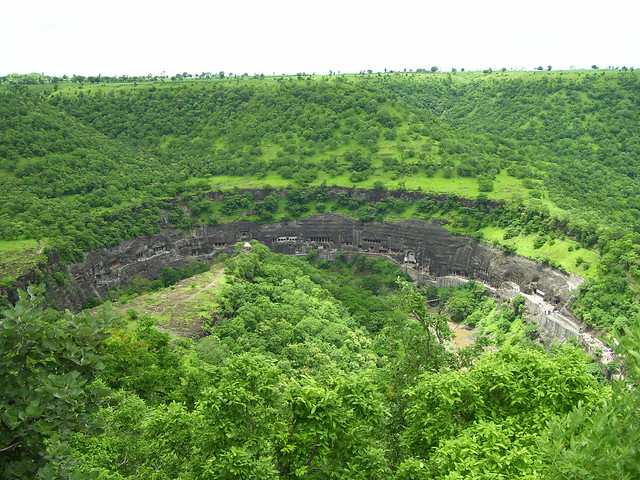
(Ashok666– flickr/creative commons license)
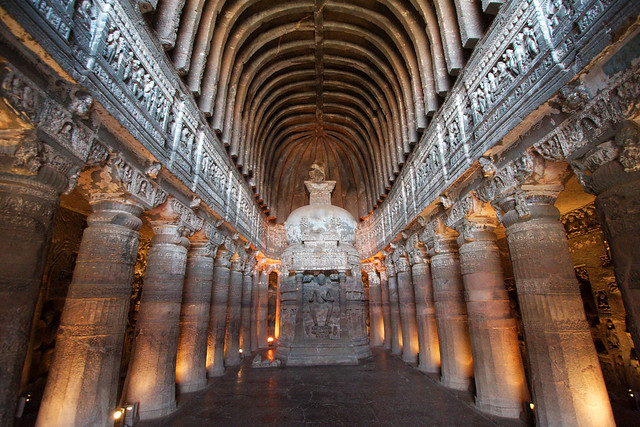
(qiv– flickr/creative commons license)

(danchitnis– flickr/creative commons license)

(shri_ram_r– flickr/creative commons license)

(shri_ram_r– flickr/creative commons license)

(sankarshan– flickr/creative commons license)
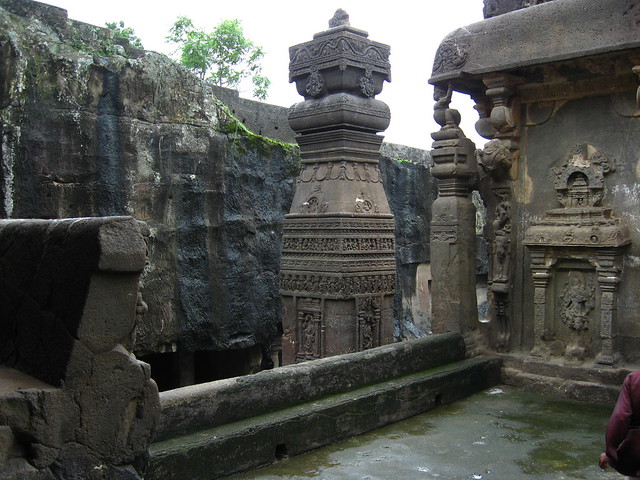
(sankarshan– flickr/creative commons license)
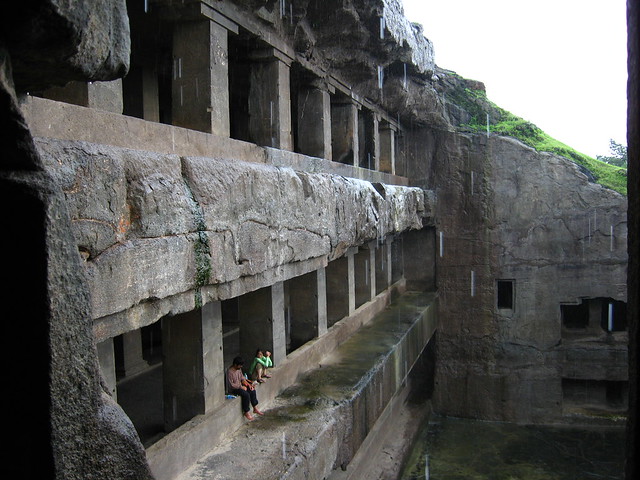
(sankarshan– flickr/creative commons license)
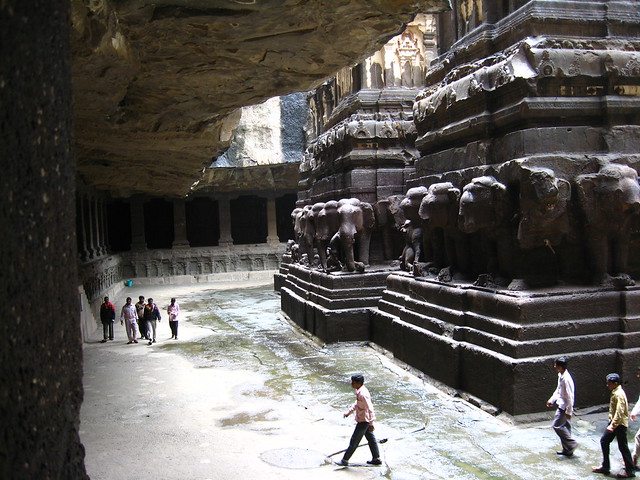
(sankarshan– flickr/creative commons license)
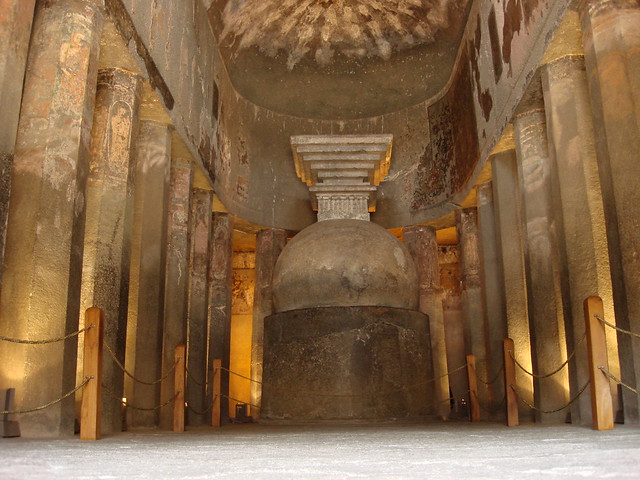
(Jorge Lascar– flickr/creative commons license)

(Karmalize– flickr/creative commons license)
